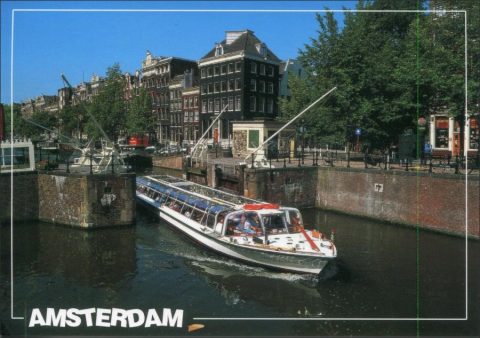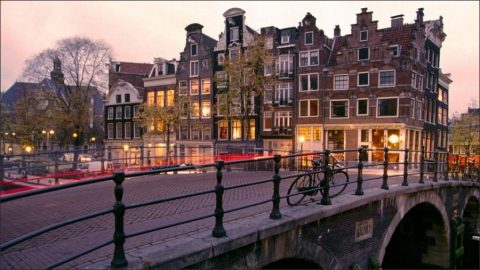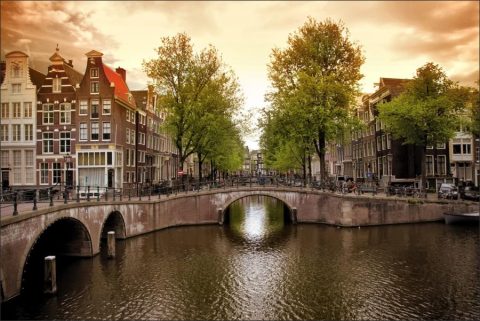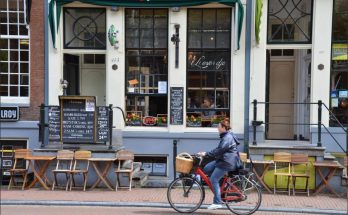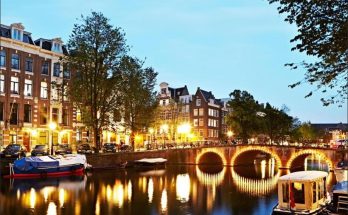Here’s what you do know: Amsterdam has more canals than Venice; that it’s liberal in matters of sex and drugs; that it rains a lot; that everyone cycles; and that some residents live on boats. As Eurostar launches a new service from London to the Dutch capital, here we look at what you probably didn’t know about the city.
1. It has more culture per capita than anywhere else
Thanks to its diminutive size and myriad museums, Amsterdam is reckoned to have more culture per capita than any onther city on Earth. Take that London. But it’s not a case of quantity over quality: the Van Gogh Museum, Rijksmuseum and Stedelijk Museum are stacked to the rafters with world-class works, while the Anne Frank House, once home to the eponymous diarist and her ill-fated family, provides an agonising insight into the plight of Jews during the Second World War.
Amsterdam also boasts a clutch of smaller, more eccentric museums, which deal with anything from drugs to deformities (yes, really). Highlights include the Torture Museum, Sex Museum, Hemp Museum, Funeral Museum and Museum Vrolik, where visitors will find an unnerving collection of human malformations (many pickled in jars) as accrued by the 18th-century scientist, Gerardus Vrolik.
Top 10 Most visited museums in Amsterdam
Rijksmuseum – 2.35 million (visitors in 2015)
Van Gogh Museum – 1.9 million
Anne Frank House – 1.27 million
Stedelijk Museum – 720,000
NEMO Science Centre – 590,000
Hermitage – 444,000
Maritime Museum – 300,000
Rembrandt House – 249,000
Nieuwe Kerk – 230,000
Amsterdam Museum – 222,000
2. You can tour the city with retired sex workers
Martine and Louise Fokken could well be the oldest women in the oldest profession. The 74-year-old sex workers have notched up nearly a century in the inglorious industry, pleasuring an estimated 355,000 men in the process (which, incidentally, is greater than the population of Iceland).
However, as the authorities crack down on the city’s louche red light district (and as age takes its toll on the ladies’ bodies) the twins have taken to tour guiding in a bid to diversify their incomes. Suffice to say they have some stories to tell, as I found out on a tour back in 2016, which pulled the curtain back on the infamous red light district and offered a unique insight into their extraordinary lives.
3. Coffeeshop are not strictly legal
Amsterdam is renowned for its hazy coffeeshops – the cannabis cafes better known for selling bud than brewing beans – but these feted establishments operate in a decidedly grey area of the law, not least because the sale, production and possession of cannabis is technically illegal in the Netherlands. Nevertheless, coffeeshops are allowed to trade marijuana; in fact, they’re granted permits to do so.
Confused? Well, stick with us because while soft drugs are not actually legal in Amsterdam, or the rest of the Netherlands for that matter, the small-scale sale and consumption of them is tolerated. This suits the authorities for a couple of reasons: one, because coffeeshops pay taxes; two, because they prevent shady street dealers filling the inevitable vacuum that would exist if they didn’t.
4. Locals will give tourists a “backie”
There’s a new way of getting around Amsterdam: by riding pillion with a local. Dubbed the Yellow Backie scheme, I recently had the pleasure of testing this novel ride-sharing initiative. Spoiler alert: there was an accident.
So how does it work? Well, when a tourist spots a cyclist with a yellow luggage rack they must shout “backie”, which should prompt said cyclist to pull over and offer a lift (assuming, of course, they’re heading in the same direction). It’s a terrific idea and a great way to meet locals. My venerable rider, Maaike, not only delivered me to my destination, but found time for a quick tour of the Jordaan. Okay, so we crashed into another cyclist, but we had fun and lived to tell the tale. “Do you crash often?” I asked, hopping off her bike. “Sometimes,” she laughed. “Mainly when I’m texting.”
5. You can stay in a printed house
Amsterdam might be best-known for its historic step-gabled dwellings, but the Dutch capital is not one to rest on its architectural laurels. In fact, the local authorities recently backed a pioneering scheme to 3D print a full-sized house in the heart of the city.
The project is the brainchild of DUS Architects, which recently printed a cabin in Amsterdam Noord, the onetime industrial wasteland that’s fast becoming the city’s hippest new suburb. Available for short-term lets, as of 2017, the diminutive dwelling was printed with bio-plastic and can be completely recycled (or, rather, reprinted). The catch? It’s so small they had to put the bath outside. Maybe don’t cancel your hotel reservation just yet, then.
6. It has a “utopian” suburb
Ambitious architectural projects are nothing new in Amsterdam, but not all of them have taken off. Cue Bijlmermeer, Amsterdam’s ill-fated south-eastern suburb that was built in the Sixties to house the city’s burgeoning middle class. They never came; the brutalist architecture of the high-rise neighbourhood failed to inspire affluent urbanites, so instead it was used to house Surinamese immigrants. Bijlmermeer, critics claimed, became a ghetto.
Then disaster struck: in 1992 an Israeli cargo plane crashed into two of the suburb’s concrete tower blocks, killing 43 people and injuring scores more. This could have been the final nail in the coffin for beleaguered Bijlmermeer, but no: the neighbourhood is currently trying to reinvent itself as an affordable outpost for artists, students and budget travellers. Watch this space.
7. The houses are narrow for a reason
The Dutch capital is renowned for its slender properties and there are numerous houses in the city vying for the title of “Amsterdam’s narrowest”. However, that dubious right officially belongs to the dwelling at Singel 7, whose svelte façade is just one metre wide, barely big enough for the front door.
There’s a good reason why Amsterdam’s houses are so narrow – and predictably it boils down to money. You see, back in the 17th century locals were taxed on the width of their properties, which, funnily enough, generated much interest in narrow-fronted houses. Cleverly, many of these properties were designed to be wider at the rear, thus only giving the appearance of being small.
8. The outcast dead all get a proper funeral
No matter how lonely you are, in Amsterdam you won’t leave this life without a proper funeral. That’s thanks to the benevolence of two men – the funeral director, Ger Frits, and the venerable Dutch poet, Frank Starik – who have made it their mission to ensure the city’s loneliest inhabitants are given a proper send off.
The funerals they organise obey the same formula: chapel, flowers, three pieces of music, four pall-bearers, and a poem, written especially for the occasion. The lines are then read out by their author, Starik. It’s a heart-warming tradition that other places would do well to adopt.
9. There’s a houseboat dedicated exclusively to cats
Cats are renowned for their hatred of water, but the moggies of Amsterdam seem quite content living on it. That’s thanks to the appropriately-named Cat Boat, a floating feline sanctuary moored on Singel canal.
Founded by cat-lover, Henriette van Weelde, the sanctuary has, curiously, become something of a tourist attraction in recent years, though that doesn’t seem to get in the way of the charity’s primary objective: rehoming Amsterdam’s abandoned moggies.
10. It’s home to the world’s first stock exchange
Much to the chagrin of money-obsessed London, it’s Amsterdam that lays claim to the world’s oldest stock exchange. Established by the Dutch East India Company in 1602, this financial institution once occupied the impressive Beurs van Berlage building, which still stands today.
